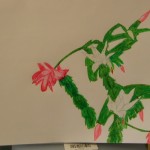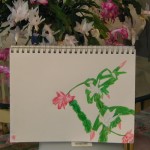LISTENING/FOCUSING PRACTICE PARTNERSHIP OR GROUP: BASIC INSTRUCTIONS
Starting Your Own Listening/Focusing Partnership or Group
In these weekly Felt Sensing newsletters of this four-week cycle, I will give instruction (including free Chapter downloads from the manual Focusing In Community: Starting A Listening/Focusing Support Group (Focusing en Comunidad) and encouragement for starting your own, local Listening/Focusing Practice Partnership or Group. Click here to read Week One: Starting A Listening/Focusing Practice Group, including links to Free Downloads of “Introduction” from the manual, Focusing in Community, in English and Spanish. This “Introduction” gives many suggestions for finding that one first person to exchange Focusing Partnership and/or how to start a core practice group.
FIRST TEN PRACTICE GROUP SESSIONS
I promised that this week I would give free download of Chapter Three of the manual, Focusing in Community (Focusing en Comunidad), telling you exactly how to do the actual exchange of Listening/Focusing Partnership Exchange: exactly what the Focuser does, and exactly what the Listener does. And here it comes! But, first, I want to present an outline for the First Ten Sessions of a practice group, in case you want to go beyond exchanging turns with one person and build a small group. These appear at the end of Chapter Three, but I wanted to highlight them here so that you could see that this is really, really simple, really possible.
You can do this, start your own self-help group. And, of course, if you want more formal help, you can take a Listening/Focusing Level 1 and 2 Class, learning the basic skills from a Certified Focusing Professional. Links to finding those classes internationally are at the end of this e-newsletter. So, from the end of Chapter Three (after this, you’ll get the link that completely explains the four types of response eluded to here: Pure Reflection, Asking For More, Focusing Invitations, and Personal Sharings):
Instructions for Small Group Practice (The Listening Exchange)
Step 1 :Round-Robin Practice: Start with a small group of people (four to six).
Listening/Focusing Turns: Go around in a circle, one person focusing in and saying something from what she is feeling (an important issue in her life or just how she is feeling right then about being there, doing this sharing), the person to the right of her saying back what she says, the listenee checking these words inside and saying what comes next, the listener reflecting that. Go back and forth in this way about three times. If the listenee seems to have run out of things to say in less than three steps, the listener can try asking her to “say more” about some part of it that seemed important.
AT THIS EARLY STAGE, STICK WHITH “PURE REFLECTIONS” AND “ASKING FOR MORE”
It’s important not to move on to Focusing Invitations and Personal Sharings until everyone is well-practiced at just hearing what the other is saying and at just holding on to a feeling sense and checking words reflected against it.
Feedback: At the end of the turn (about five minutes), first the listenee, and then the listener, say a little about how the experience felt, what felt good, what wasn’t quite right. Other people in the group can comment or give suggestions from the readings, but avoid getting into too much discussion or argument about what happened. The point is to practice, not to get distracted into intellectual conversation (which is all too easy!).
Continue around the circle until everyone has had a turn at both roles. Your group can repeat Step One as often as you like or until you feel ready to move on to Step Two. Step One takes about one-and-one-half hours with four to six people. I would suggest doing it at least three or four times.
Step 2 : Dyads
Pair off in twos and spread out to exchange fifteen minute turns, using just Pure Reflection and Asking For More when the person seems to have run out of things to say. Try out using a Focusing Invitation. Come back together as a group and discuss how it went, where you had trouble, what new things you learned. Consult readings, or memory of things read, for answers to questions. Repeat as often as wanted or needed.
Step 3: Triads
Alternatively, pair off in threes. This is an ideal learning structure, since the third person can act as an observer. Split up the time equally, allowing 10 minute between turns for feedback. Each person takes a turn as listener, listenee, and observer. The observer also keeps time, giving a five-minute warning before the end of a turn.
At the end of a turn, each person gives short feedback, First the listenee says how the turn was for him/her – what was helpful, what could have been different. Then the listener says how it was to be the listener – good feelings from following the others journey, anxiety about remembering, etc. Then, the observer gives feedback, using Table 3.4., Feedback Sheet For Listening Turns, as a guide.
Step 4: Focusing Partnerships
When you feel ready or interested, pair off in twos who will get together sometime during the week to exchange one-half hour turns. In these turns, listeners can try out Focusing Invitations and Personal Sharings as well as Pure Reflection and Asking For More, but always with the emphasis on helping the listenee to stay with her “felt sense,” and make words for it. The listenee needs to be sure to go back to Pure Reflection for several steps after each Personal Sharing or Focusing Invitations.
Step 5: Focusing Group Meetings
When you come together to do Listening/Focusing turns in a small group (set aside two hours), split up the time so that each person will have an equal amount for a listening turn, with five to ten minutes additional in between each turn, for feedback and comments from others besides the two. Take turns keeping time, ending people’s turns on schedule, warning them a minute or two before the end, and moving on to the next turn after limited discussion. Chapter 7.2 gives a format for a group meeting.
Don’t get side-tracked into a lot of discussion with no time for doing. Know that a person can stop at the end of her turn, even if she has been working on heavy feelings. During turns, allow no input from others in the group. At the end of each turn, anyone in the group can say what they saw, ask questions, or offer warm support for the work done.
Option: If there are more than four people, or if each person wants a longer turn, you may decide to split into triads and share turns within these, again dividing time equally and making sure that each person who wants to gets a chance both at listening and being listened to. The third person can serve as an observer, giving feedback at the end of the turns. The following page gives a feedback sheet which you can use as a guide when you are observing listening turns (Table 3.4).
It is also a good idea to begin turns with some short, group Focusing Instructions (Chapter Four gives a thorough introduction to Focusing). The instructions can be read to the whole group by one person. In general, they give everyone a chance to step out of the tensions of the day and to choose an issue or a feeling they would like to work on. Table 3.5 gives some short, pre-listening turn Focusing Instructions.
IF YOU HAVE THE SELF-HELP PACKAGE CDS, INTUITIVE FOCUSING INSTRUCTIONS, YOU CAN ALSO PLAY AN EXERCISE FROM THESE EACH WEEK FOR THE GROUP TO TRY.
AND YOU COULD ALSO USE MY WEEKLY BLOGS OR E-NEWSLETTERS (YOU CAN ALWAYS GO TO THE ARCHIVES FROM WWW.CEFOCUSING.COM, CATEGORY “FREE RESOURCES,” THEN CHOOSE E-NEWSLETTER ARCHIVE OR SIMPLY SUBSCRIBE FROM THE WEBSITE SIDEBAR) AS “LESSONS” FOR PRACTICE OR DISCUSSION AT MEETINGS, IF YOU WANT MORE STRUCTURE.
Once you have established your listening exchanges you should meet to exchange turns once a week for at least ten weeks. Since you will be continuing to read the manual and to learn new skills, you might want to schedule in one-half to one hour of time at your listening exchange for discussion of additional chapters of the manual.
Now, click here to go to my blog where, at the top, you will find the links to download the complete “Chapter Three: Listening/Focusing Partnership Exchange” in English or Spanish if you haven’t already done this or ordered the complete manual or multi-media Self-Help Package in our Store.
Finding Your First Person Or Core Group
And just an easy reminder from last week’s lesson, if you haven’t yet taken that first step of finding one person or a small group to start practicing with:
Beginning your Listening/Focusing Practice Group can be as easy as finding one other person to share the Self-Help Package with. You will have a manual download in English or Spanish giving explicit instructions, two 2-CD sets explaining the basic philosophy and including many Focusing Exercises you can use to begin your meetings, and a two-hour DVD with four different demonstrations of being a Focused Listener while someone else is using Intuitive Focusing. All for the introductory price of $39 US!!!
You can get online support and answers to your questions as you try to proceed in the Creative Edge Practice e-group at http://yahoogroups.com/group/creativeedgepractice .
Tell me what you think at cefocusing@gmail.com or comment on this blog below ! Or email your findings to The Creative Edge Collaborators’ Group. Join at http://groups.yahoo.com/group/creativeedgecollab
See blogs under Category: Conflict Resolution in the sidebar to find a complete mini-course on Interpersonal Focusing and Conflict Resolution, including Rosenberg’s Non-Violent Communication, Blanchard’s “One Minute Apology,” Patricia Evan’s books on Verbally Abuse and Controlling Relationships, McMahon’s Beyond The Myth Of Dominance, and much more.
Download complete Instant “Ahah!” Mini-Manual, in English and Spanish, from CEF Website
Find links to free articles, personality tests, multi-media Self-Help training, Classes and workshops
Dr. Kathy McGuire, Director
The site of new insights and creative solutions is at the edge of what is already known. This edge, The Creative Edge, holds implicit within it all past and future knowing about the problem, more than could ever be put into words in a linear way


